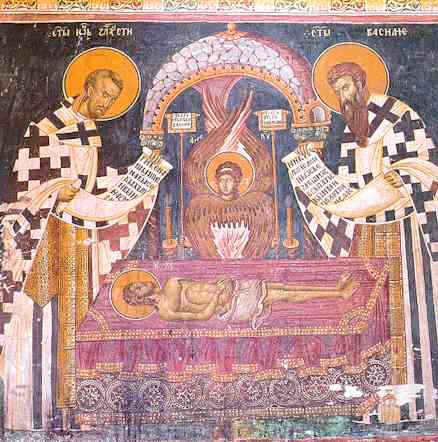[ Home ] [ Library ] [ Index ] [ Maps ] [ Links ] [ Search ] [ Email ]
The Saga of Kosovo
Part #6 (out of 7).
Back to: The history of Kosovo.
The Serbian People began to formulate their spiritual identity during the are of the Holy Brothers Cytil and Methodius (9th century), and their 5 disciples who followed (10th century). They are considered the first baptizes and enlighteners of the Serbs, as well as the other Slavs.The fruit of their work, harvested for some 2 centuries from Byzantium/Bulgaria to the Adriatic, included the gradual Christianization of the Serbs both nationally and individually, the appearance of the first ascetics and saints among the Serbs, and the first monuments of Serbia's spiritual and secular cultures.The preference for spiritual values became an inseparable part of the Serbian national soul, as well as its lifeblood in the early stages of its history.
|
|||
Fresco, Ss Basil the Great and John Chrysostom, authors of the Divine Liturgy, flanking epitaphios with seraph above, Decano Monastery, 14th c.
|
|||
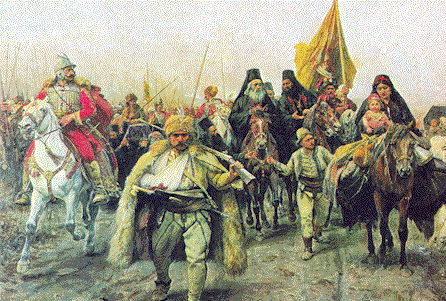 The Migration of the Serbs, Patriarch Arsenie was forced to move his people in 1690. 185,000 Serbs were forced from Kosovo |
|
||
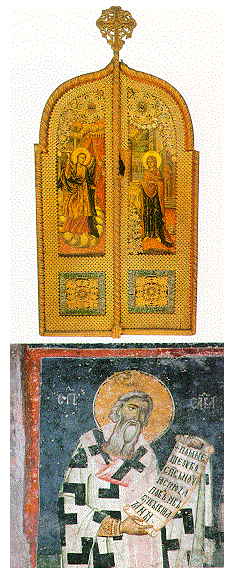 Top: Royal doors, Pec 1570 - restored at the beginning of the of the 19th century. Bottom: Fresco, detail, St Sava, Church of the Apostles, Pec, 13th c.
|
|||
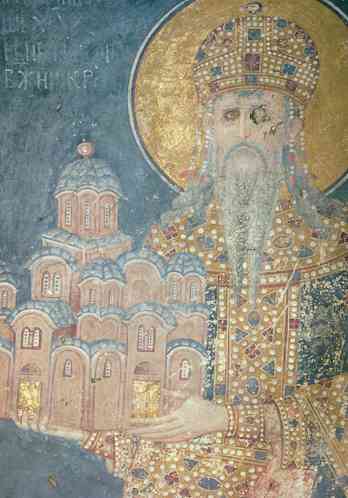 Fresco, King Milutin, Church of Ljeviska Mother of God, Prizren, 1310.
|
|||
Iconostasis, The Mother of God Church, Monastery of Studenica
|
|||
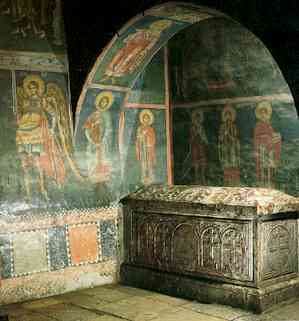 Tomb of Archbishop Danilo II, Pec, 14th c.
|
|||
As the Very Rev. Mateja Matejic has observed, "Serbs were the first to anticipate the grave peril coming at one time from Islam and then from Nazism and finally Communism. They were the first to resists…making the victories of others possible, even if they themselves were defeated."
|
